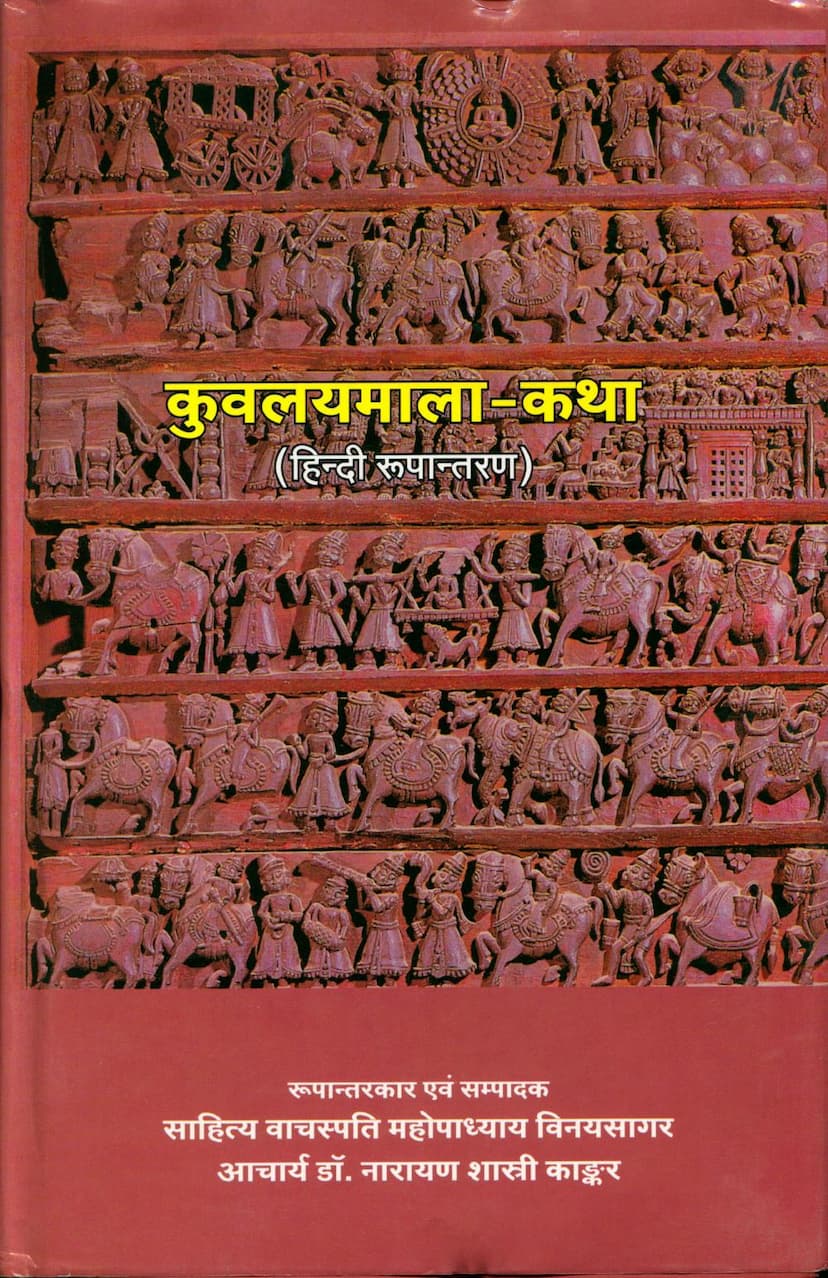Kuvalaymala Katha
Added to library: September 2, 2025

Summary
Here's a comprehensive summary of the "Kuvalayamala Katha" based on the provided text, focusing on its content and significance:
Kuvalayamala Katha: A Summary of its Content and Significance
The "Kuvalayamala Katha," originally composed in Prakrit by Acharya Udyotan Suri in the 8th century CE (Vikram Samvat 835, March 21, 779 CE), is a significant work in Jain literature and provides a rich tapestry of India's cultural life during that era. This Hindi translation and adaptation, by Sahitya Vachaspati Mahopadhyay Vinay Sagar and Acharya Dr. Narayan Shastri Kankar, makes this valuable text accessible to a wider audience.
Key Aspects of the Kuvalayamala Katha:
-
Historical and Cultural Insights: The text offers a comprehensive picture of 8th-century Indian society, revealing extensive trade relations with foreign countries. It highlights the use of both land and sea routes for extensive travel by merchants, with Vijayapuri and Soparak being major market centers. The narrative also touches upon various social events, the existence of diverse castes, and the use of different types of clothing, ornaments, and musical instruments.
-
Literary and Intellectual Prowess of the Author: Acharya Udyotan Suri is depicted as a highly learned scholar of Indian literature. The "Kuvalayamala Katha" is considered his sole surviving work, showcasing his profound knowledge and multifaceted talent. He possessed a deep understanding of both philosophical texts and the traditions and genres of Indian literature. Beyond ancient poets, he was also knowledgeable about secular arts and beliefs, making his work a beautiful synthesis of doctrine, literature, and folk culture.
-
Engaging Narrative and Didactic Purpose: The "Kuvalayamala Katha" is not merely a religious text but a literary masterpiece. Stories like those of Kudungadwip, Jugasamila, Priyankara and Sundari, and Ranyandur are woven into the narrative, bringing religious descriptions to life. Despite being a religious narrative, its literary quality is maintained. The primary aim of the work is to guide the general populace towards righteous conduct and away from misconduct, focusing on the cleansing of the mind from pollution. It primarily outlines the Jain principles for achieving lasting happiness and spiritual attainment, which can also lead to extraordinary abilities like knowing past lives.
-
Structure and Content: The original Prakrit work is estimated to be around 13,000 verses. The narrative is divided into four sections (prastas). It begins with auspicious invocations and a statement of purpose. The summary of the story is presented before the main narrative unfolds, concluding in the fourth section. To effectively convey its message, the work includes various sub-narratives illustrating key virtues and vices, such as stories about anger (Chandsoma), pride (Manabhat), deceit (Mayaditya), greed (Lobhadeva), and attachment (Mohadatta). It also features illustrative examples (drushtantas) related to vows, humility, and atomic principles. The central plot revolves around Kuvalayachandra, detailing his birth, abduction, experiences in a forest where he encounters a sage, learns about the past lives of five individuals, witnesses a lion's attainment of right faith, and ultimately achieves liberation through intense penance.
-
Evolution and Translation: The "Kuvalayamala Katha" was initially translated from Prakrit into Sanskrit by Shri Ratnaprabha Suri, the disciple of Shri Parmanand Suri Ji, as Prakrit became less accessible to the general populace. This Hindi adaptation is a further step to reach an even broader audience. The work is praised for its engaging style, reminiscent of Mahakavi Bana's "Kadambari," with sub-stories enriching the main plot.
-
Influence of Jain Principles: The core of the "Kuvalayamala Katha" is rooted in Jain teachings. It emphasizes the importance of righteous conduct, the purification of the mind, and the path to liberation through virtuous actions like charity, morality, penance, and contemplation. The stories serve as parables to illustrate these principles and inspire readers towards spiritual well-being.
In essence, the "Kuvalayamala Katha" is a timeless narrative that blends historical observation, profound scholarship, and spiritual guidance. It continues to be a source of inspiration and knowledge, offering valuable insights into ancient Indian life and the enduring principles of Jainism.